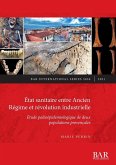For the first time, this volume brings together an international group of experts on the topic of early modern military encampments in Northwestern Europe. Despite the flourishing of conflict archaeology across the continent, the discipline lacks a consistent terminology and adequate typology for describing and interpreting the large variety of structures in encampments and the finds they contain. On a methodological level, it remains difficult to detect these large-scale but low-impact military features in the small windows offered by trial trenching. Many of these sites go unrecognized, as a result of their ephemeral nature and lack of comparative framework and are therefore subsequently destroyed. The authors in this book take on this challenge, giving an overview of the documents, features and finds that are linked to military encampments and the methodologies that can be applied for their identification and interpretation. Pour la première fois, ce volume rassemble un groupe international d'experts autour du sujet des campements militaires aux temps modernes dans l'Europe du Nord-Ouest. Bien que l'archéologie des conflits soit en plein essor sur le continent, il manque à la discipline une terminologie consistante et une typologie adéquate pour décrire et interpréter la grande diversité de structures dans les campements et la culture matérielle qu'ils contiennent. D'un point de vue méthodologique, il reste difficile de détecter ces phénomènes de grande ampleur mais à faible impact par le biais de petites fenêtres offertes par des diagnostiques archéologiques. À cause de leur nature éphémère et par manque d'un cadre comparatif, de nombreux sites ne sont pas reconnus et sont par conséquent détruits. Les auteurs dans ce livre relèvent ce défi en présentant un aperçu des documents, des structures et de la culture matérielle associés à des campements militaires, ainsi que des méthodologies qui peuvent servir pour leur identification et leur interprétation.








